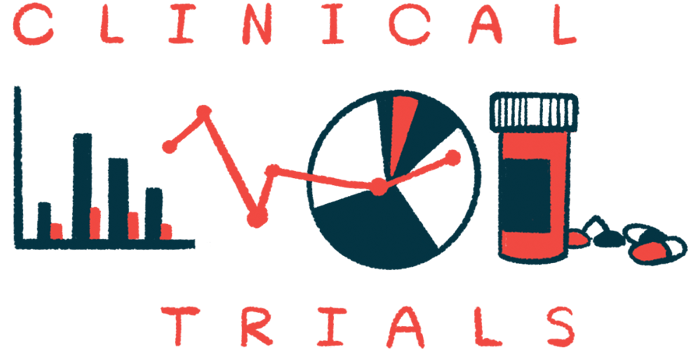Sevasemten lowers markers of muscle damage in BMD: Trial
Phase 2 study meets main goal; expanded and pivotal trial enrolling globally

The investigational oral therapy sevasemten significantly reduced markers of muscle damage in people with Becker muscular dystrophy (BMD) treated in a Phase 2 trial, according to top-line results announced by the therapy’s developer, Edgewise Therapeutics.
“This landmark study presents compelling biomarker data and promising signals that suggest the potential for functional stabilization with administration of sevasemten,” Craig McDonald, MD, a principal trial investigator and professor at the University of California Davis, said in a company press release.
Edgewise scientists will join Parent Project Muscular Dystrophy to discuss sevasemten trial findings in a BMD community webinar this Wednesday at 1 p.m. ET. Registration is available online.
Sevasemten aims to be a first treatment specifically for Becker MD
The global Phase 2 study, called CANYON (NCT05291091), tested sevasemten against a placebo in 40 adults and 29 adolescents with BMD. Its goal was to see if the experimental therapy could reduce levels of creatine kinase, a marker of muscle damage, after a year of treatment.
Top-line results show this goal was met: Across study months six to 12, creatine kinase levels fell on average by a significant 28% in patients given sevasemten compared with those on the placebo. A separate marker of fast muscle fiber damage called TNNI2 also fell significantly, by 77%, in treated patients relative the placebo group over the yearlong study.
CANYON, the largest interventional study of BMD to date, is also the first to meet its main goal, Edgewise stated in its release.
Measures of physical function, including scores on the North Star Ambulatory Assessment (NSAA), 10 meter walk/run, and four stair climb, all tended to be better in patients given sevasemten than the placebo after a year of treatment. None of these measures showed a statistically significant difference, however, meaning the difference could be due to random chance. The CANYON study was not designed to detect statistically meaningful differences in these functional outcomes.
No new safety issues were reported in CANYON, with the therapy being well tolerated overall.
Muscle-targeted therapy appears to preserve function in treated patients
Results from CANYON are in line with data from the previous Phase 1 ARCH trial (NCT05160415), the company reported. Two-year data from that safety study in 12 adult patients suggested that sevasemten stabilized muscle function compared with what’s typically seen in untreated BMD.
“We are very encouraged by the CANYON results in Becker and the potential of this novel muscle-targeted therapeutic,” said Joanne Donovan, MD, PhD, chief medical officer at Edgewise. “This confirmed our previous observations in the ARCH study of significant decreases in biomarkers of muscle damage and similarly we are seeing evidence of preservation of function in Becker patients.”
Those who completed CANYON could continue or start on treatment in the extension MESA (NCT06066580) trial, which is assessing the treatment’s long-term use in BMD patients who took part in any sevasemten study. According to Edgewise, 99% of eligible participants have enrolled in MESA.
GRAND CANYON, an expansion of the Phase 2 study, is testing sevasemten against a placebo in larger group of BMD patients, with the primary goal of evaluating how treatment affects NSAA scores after 18 months. Results are expected to be pivotal, meaning that positive findings could provide the basis for applications seeking sevasemten’s approval.
Potentially pivotal GRAND CANYON trial enrolling at sites worldwide
Enrollment in GRAND CANYON is ongoing at dozens of sites across the U.S., Europe, Israel, Australia, and New Zealand. According to Edgewise, the pivotal study should be fully enrolled in early 2025. The company plans to meet with regulatory authorities in the U.S. and Europe to discuss the Phase 2 results and next steps for sevasemten in BMD.
“Becker has no approved therapies. I look forward to the results of the GRAND CANYON pivotal cohort with the hope of bringing the first treatment option to this patient population,” McDonald said.
BMD is caused by mutations that disrupt the activity or lower the levels of dystrophin, a protein that normally functions like a shock absorber to help protect muscle cells from damage. Dysfunctional dystrophin causes muscle cells to accumulate more wear-and-tear over time, ultimately leading to the muscle weakness and wasting that characterize the disease.
Sevasemten, previously known as EDG-5506, is designed to block the activity of myosin, a protein that plays a central role in muscle contractions. By blocking myosin, the experimental therapy aims to make muscle contractions more gentle so that muscle cells don’t accumulate as much damage.







